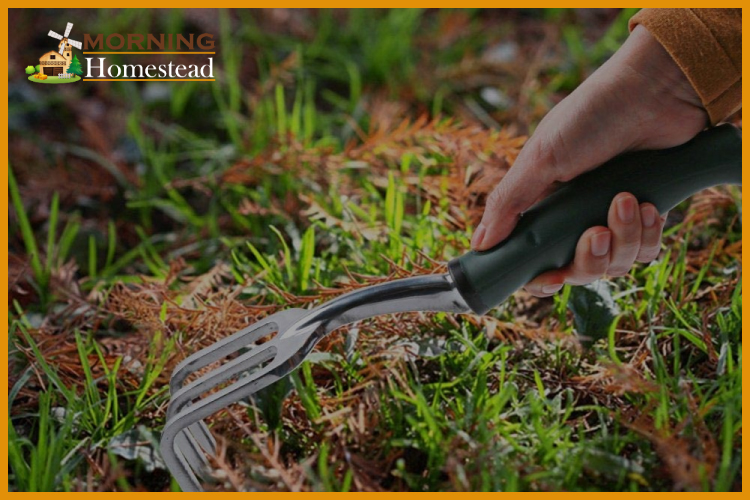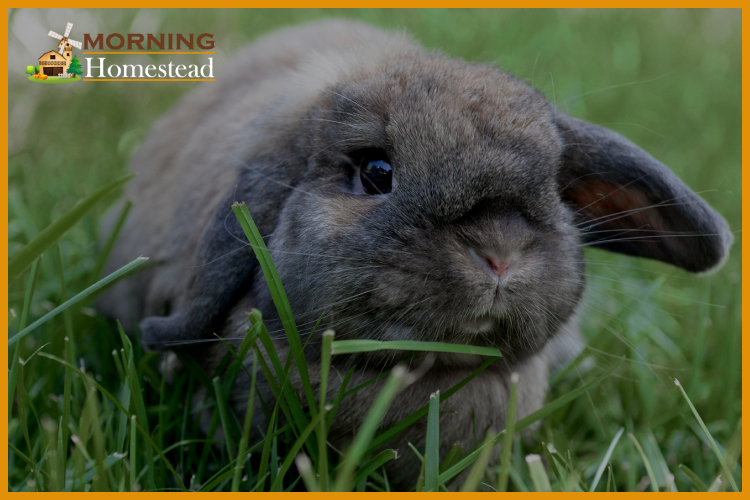Last Updated on June 9, 2023 by Georgie Smith
Farming methods range from Hydroponics, Aquaponics, Apiculture to Aquaculture and many others. However, choosing what to practice depends on your skills or interest. Other times, trying something new is all everybody wants.
If for instance you read one of the best hydroponics books and it got you started, and now you find you are interested, you need to read as many guidebooks as possible.
Moreover, now that you have landed on this post, I presume it is because you are looking for easy tips on how to set up your Aquaponic farm at home without running the risk of failing.
See Also:
| Best Aquaponics System for Beginners: 2023 Reviews (Top Picks) and Guide |
| How Do Aquarium Snails Reproduce? |
| Hydroponics Store Near Me: Find the Best Hydroponics Supplies Near You (2023) |
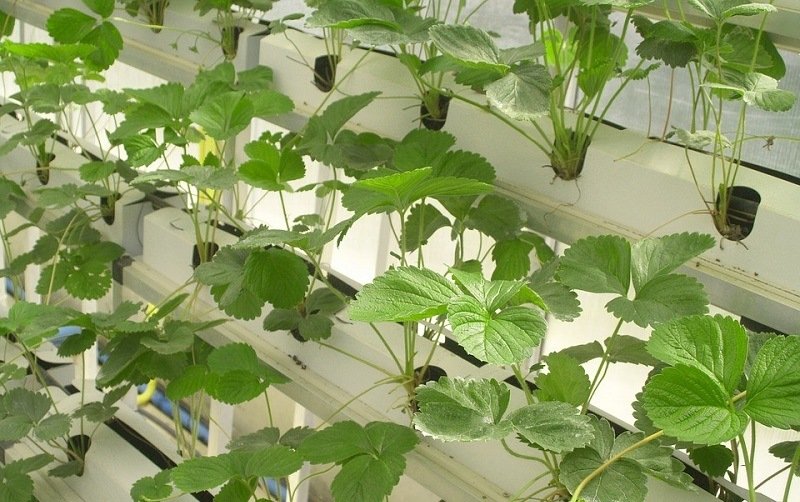
Rolling Up Your Sleeves: Learn Step-By-Step and From Mistakes
If you have an interest in Aquaponic, it is never wrong to try even though you may make mistakes in the beginning. Take some time learning as much as possible learning step-by-step. The more you learn you will see that the benefits far outweigh the risks which are what makes it worth the time.
In no time, you will be an expert on your own, and to others. However, the question is where can one find the best Aquaponics books to teach you through easy guidelines? The questions every beginner asks are always endless, and chances are you may end up even more confused.
How to excel in Aquaponics is one of the many questions newbies ask. Moreover, because useful information on this farming method is scattered all over the web, it is sometimes difficult to find a comprehensive webpage that covers everything you need to know as a beginner.
Moreover, so you want to find out whether there is a good book about Aquaponics that simplifies everything. Without a doubt, the answer is an absolute YES. This post puts all the worries behind you by recommending some of the best Aquaponics books on the market. Now you can start turning your interest into a passion and a huge success.
However, before I take you through that,
What is Aquaponics and How Does it Work?
Different People define Aquaponics based on their own understanding or from an experience point of view. It is, however, important, to begin with, the basics. When you combine aquaculture and hydroponics, the result is Aquaponics. In a layman’s language, it is the rearing of fish and growing of plants in the same place or garden.
How it works
The catch with this farming method is that fish and plants depend on one another for existence. That is something science defines as symbiotic relationship and in the nitrogen cycle. It may sound complicated now, but later you will see that Aquaponics is one of the most natural homesteading practices anyone can start, even with little or no experience.
You should also note that it is not just fish and plants that exist in Aquaponics ecosystem. Microbes make the third participants. Moreover, even though not usually primarily the focus at the onset, they play an all-important role in ensuring the plants and fish stay healthy. This interrelationship is what brings about a balanced ecosystem (nitrogen cycle) that is ideal for the practice of Aquaponics. Moreover, with it, you can be sure your farm is on the right track.
The microbes act as nitrifying bacteria (nitrobacteria). They do this by converting wastes such as ammonia that fish releases into nitrates which are then taken up by plants. In return, the plants purify water for continued use by fish.
The recalculating water between the fish tank and grow bed makes up a complete system, and by extension, it is what brings about optimal conditions for your growing/rearing activities. A pump is used to move water through the root zones and consequently back into the tank.
How to Build an Aquaponics System
Building a system is like assembling computer parts and connecting the peripheries to make it whole. It is always up to you to choose what fits your needs even though this may not be the case for a beginner.
How to build a working system that can be a bit challenging if you do not follow the right procedures. Moreover, so the question is, what do you need? Are they things you can source locally, or you will need to buy them from a local agro shop?
The things you need
- Hardware components include: a fish tank, connecting pipes, a grow bed and pump. (read air pump reviews)
- Software components include plants, fish, water and nutrients
- Finally, an integrated system is whereby all the hardware components are connected. It is imperative to understand deeply how the nitrogen cycle works so that a system with the best optimal conditions is what you have at the end of the day. It is all about the nitrogen cycle and PH levels. There are of course devices for monitoring all these.
Top 6 Books on Aquaponics Gardening
Whether you are just starting as a beginner or you just want to improve your prowess in Aquaponics, you need to find the best books out there. You can get one from a local library or buy from online retail bookstores and shops like Amazon. Below is a review of some of the best book available.
Aquaponic Gardening: A Step-By-Step Guide to Raising Vegetables and Fish Together
This book written by Sylvia Bernstein, Vice Chairman of Aquaponics association comes loaded with tons of information and insight. She is also the founder of Aquaponics Source and manages AquaponicsComminity. Ms. Bernstein guides the largest community of growers in the United States and partakes in many other engagements in this field.
Through her extensive experience and expertise, Sylvia walks you through real and practical guidelines on Aquaponics in the most meticulous way. The book is a handy publication for both starters as well as experienced farmers. Some of the things you will learn once you read this book include:
- A step-by-step guideline on how to turn your dream of becoming Aquaponics farmer into reality.
- Coming up with a balanced Aquaponic ecosystem for your plants and fish
- Do-it-yourself guidelines on how to create your own farm and additional tips on how to start growing fresh, healthy and sumptuous foods right in your homestead.
- Tips for sustainable home gardening
- How to start growing real food at home
What’s more is that Sylvia’s book helps you choose the right location for your system while also sampling recommended tools for building one. Through an angle of her own experience, she further explores the living components of the system such as worms, bacteria, fish, and plants.
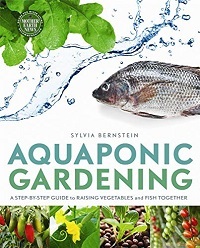
Buy On Amazon
Aquaponics: From Beginner to Expert-Hydroponics & Aquaponics Double Book Bundle
Every beginner deserves a simplified Aquaponics guidebook, and this one by William Walsworth is a worthy read. If you want to start producing fresh herbs, veggies, and fish right in your backyard, and this book is for you.
There is no better way to go about it except through the best book crafted from an experience point of view. A copy of this publication will not only be an exciting read but also takes you through the following:
- Building your own Aquaponic system at home
- Different designs to choose from and how to shape a system to meet your desires and needs
- Tips for optimizing you Aquaponic design
- A walkthrough on achieving optimal farming conditions
- Pitfalls to avoid when starting and how to maintain your system

Buy On Amazon
Aquaponics: How to Build Your Own Aquaponic System
Another great publication for home gardeners is this one written by Celine Walker. It really doesn’t matter whether you want to start large or small it is essential to understand how nitrogen cycle helps keep your system healthy.
How to build your own Aquaponic system book is detailed enough to enable you to do just that. However, that is not all. There are many other things that Celine’s guidebook will teach you such as;
- A definitive approach to Aquaponics
- How to get started with your own system at home
- How to design a good system
- The right type of plants and fish species that do well in this farming method
- How to maintain your system at optimal
- Tips for making profits growing veggies, herbs, and fish simultaneously
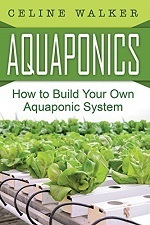
Buy On Amazon
Aquaponics: How to Build Your Own Aquaponic System and Successfully Grow Aquaponic Plants
In this book, Celine Walker once again strikes where it matters most. It is a multifaceted approach to farming at home and cuts across hydroponics, Aquaponics and homesteading. While the previous one emphasizes how to build a working growing system at home.
The book also delves into successful practice of Aquaponics, presumably, after establishing a garden with the right conditions. Purchasing the two books will certainly take care of all your concerns.
More specifically, Celine’s ‘How to successfully grow Aquaponic plants’ answers the following questions:
- Who can be successful in Aquaponics?
- What are the right growing essentials?
- How can you reduce water waster and maximize its use in your system?
- What is the right location for establishing your Aquaponics farm?
- What makes right growing conditions
- Turning your Aquaponics practice into a commercially benefiting venture
There is more to learn from this Celine’s Volume 3 series. The bottom line is that building the best system is what everybody wants and this book will get you there.

Buy On Amazon
Aquaponics: The Ultimate Aquaponics Guide-From Beginner to Expert (Aquaponic, Hydroponics, Homesteading)
Imagine fishing right at home and at the same time, filling your fruit and vegetable basket with fresh produce from your farm. Sometimes it is not easy to find fresh food from the market, and that is why you should start thinking about home gardening options.
Moreover, as you will find out, this book by Thomas Thatcher is all you need to get started. It will teach you a couple of things to move you from the point of contemplation to practice. The following are some of the things the book ‘The Ultimate Aquaponics Guide’ explores:
- Benefits of owning Aquaponics farm
- Why it will save you lots of water, land, and energy
- The type of foods you can grow
- Different growing systems and how to choose the best materials for building your own
Thomas’s book is a handy copy for every urban dweller keen on practicing easy home gardening.
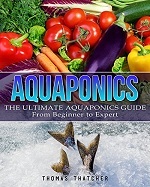
Buy On Amazon
Aquaponics for Beginners: How to Build your own Aquaponic Garden that will Grow Organic Vegetables

This book is written by Nick Brooke from howtoaquaponic.com where he writes about his passion for aquaponic gardening.
Aquaponics is a great and healthy hobby to do from your own backyard. You will produce fresh organic vegetables and fish. The only thing you need to do is feed the fish and keep an eye out for the water quality. What you are going to learn in this book is the perfect combination of knowledge and practical know-how. Actionable tips to get you started making your first aquaponics system.
These are some of the aspects the book talks about:
- Figuring out the biological surface area
- How much to feed your fish
- Sample setups for in your backyard
- Mineralization tanks
- Solids filtration
- Stocking density for the fish
- Natural pest control
- Frequently made mistakes beginners make
- What you need to build a backyard system
This book is perfect for beginners and intermediate growers.
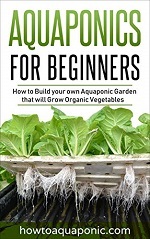
Buy On Amazon
Recommended Plants and Fish in Aquaponics:
For a fully operational and healthy system, you need to rear only recommended species of fish and also grow plants that thrive well in Aquaponics. I break this down into two parts for easy understanding and selection.
Best fish for Aquaponics
A good number of fish breeds popular with aquaculture equally do well in an environment of coexistence such as Aquaponics. Most people will want to have Tilapia because it is almost everyone’s favorite.
Here is a list of additional fish species you can raise on your farm. Take note that the list is not exclusive, but at least it will give you a significant head-start when setting up your Aquaponics garden.
- Oscars
- Koi
- Catfish
- Perch
- Goldfish
- Freshwater pawns
- Peruvian Pacu
Best plants for Aquaponics
When it comes to plants that do well in Aquaponics, you may be tempted to try the ones that are also popular with hydroponics or Aerogardens. However, it is not something you should wake up one day and decide today I am going to grow Thymes in my garden.
It may end up hurting the aquatic life in the form of fish. A little research always helps and is a list of the best plants for Aquaponics.
- Cucumber
- Tomatoes
- Squash
- Watercress
- Zucchini
- Melons
- Broccoli
- Strawberries
- Melons
- Most herb varieties
- A variety of lettuce
Best Aquaponics System for Beginners
Aquaponic newbies need to start with something relatively simple before moving to advanced systems. Below, is a chart of the recommended systems for you to consider. They are deep water culture, media-based Aquaponics, and vertical Aquaponics.
| SYSTEM | FEATURES |
|---|---|
| Deep Water Culture | Foam Rafts used as grow beds. Plants inserted into holes on the rafts and roots dangling in the water. Fish is placed in the water channels to eat solid wastes. Ideal for fast growing plants such a salad greens and plants that do not need many nutrients. Works for commercial and small-scale Aquaponics |
| Media-Based Aquaponics | Media for growing can be clay shale and clay pellets. The media performs the function of biological and mechanical filtration (nitrification and removal of solid waste). Recommended for home and hobby practices. Large fruiting plants, herbs, and leafy greens do well in this system. Examples of the media based system include AquaBandance System and AquaUrban 60 Gallon System. |
| Vertical Aquaponics | Ideal for growing large amounts of plants in a small area. Vertical pipes used with water flowing inside. Plants inserted through holes in the pipes. Water then flows back into a fish tank/trough Ideal for strawberries, leafy greens, and plants that do not need much support. |
FAQs about Aquaponics Books
Q: Where Can I find the best books on Aquaponics?
A: This is an excellent question because chances of buying a fake book are always high. To answer it, one can obtain great books online from retail stores/shops like Amazon. It is, however, essential to take a look at book reviews on independent sites posted by experienced farmers of buyer reviews before checkout.
Q: Are there Aquaponic books for newbies?
A: Beginners always think this farming practice is complicated, but that is not the case. There are excellent books for starters that will teach you the basics of setting up own farm, how to maintain it and the fish/plant species that do well.
Q: Can I profit from my Aquaponic farm?
A: In as much as most people view it as a home gardening for subsistence produce, commercially rearing fish and growing veggies, fruits and herbs in your backyard farm is a viable option you can explore. You will need a more extensive system or a relatively expanded one depending on the scope of the market you want to serve.
Conclusion
In summary, starting your own fish and vegetable farm at home is all about getting to know the basics. Such as, what system is ideal for beginners, mistakes to avoid and how to maintain growing conditions at optimal.
Reading about Aquaponics will give you a head start, and the best guidebook is something you very much need. Perhaps you may want a copy written by those who have experience in Aquaponics, which is exactly what you should do to educate yourself.
It is always a pivotal stage in your quest for success in home gardening. Reviewing books before purchasing a copy is a smart move. You need facts and suggestions on how to get started as well as how you expand at a slow pace to achieve perfection.
Do your homework to find the right books for your need. Once you learn the basics, excel at your own pace as you learn the thrill and benefits that associate with the world of Aquaponics.


